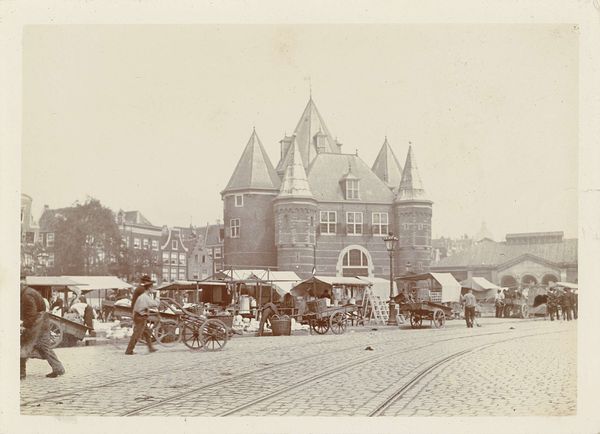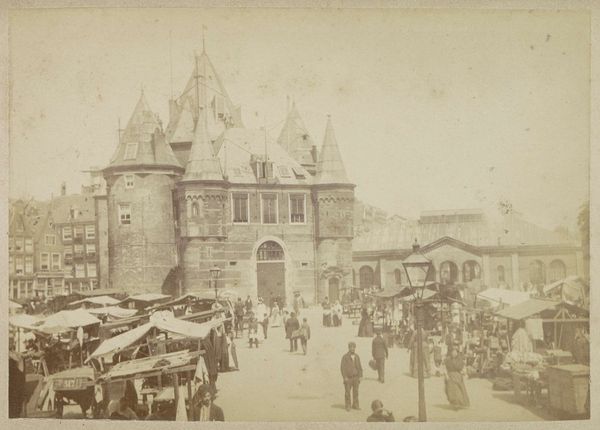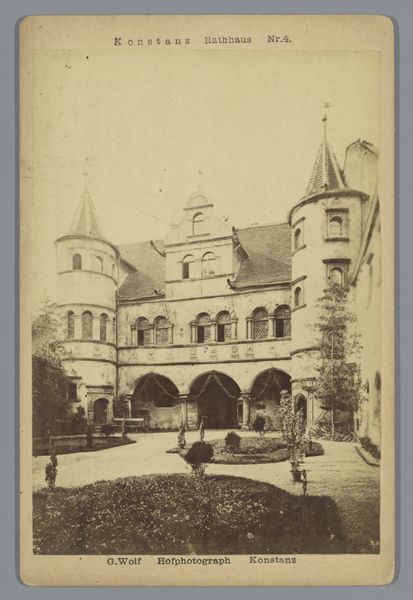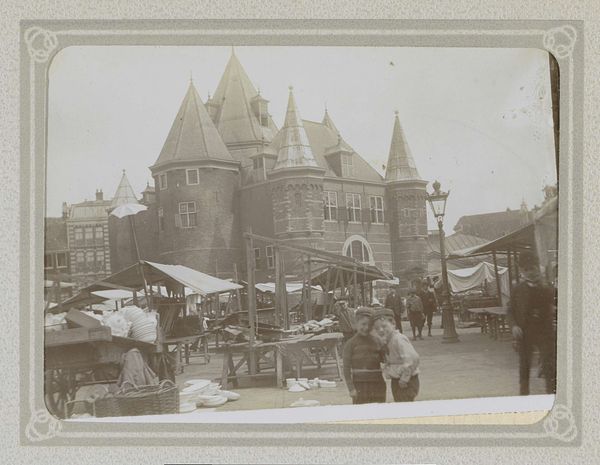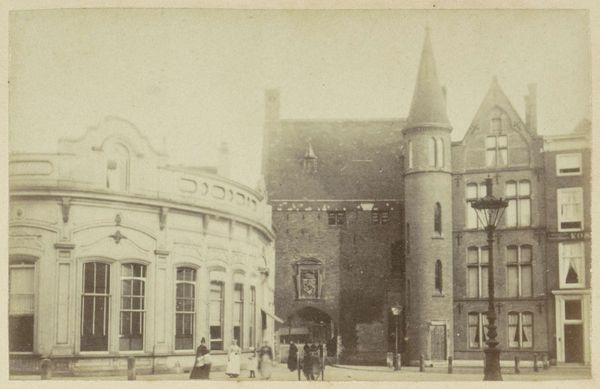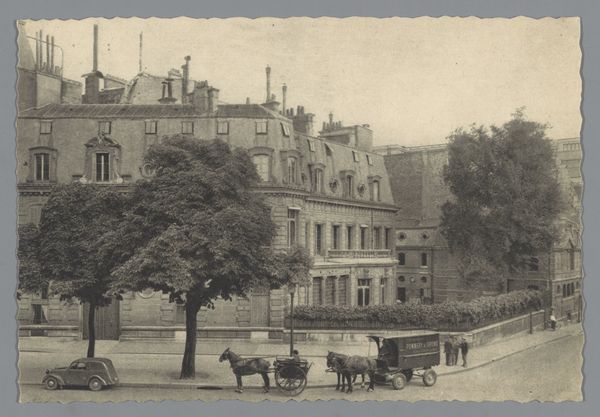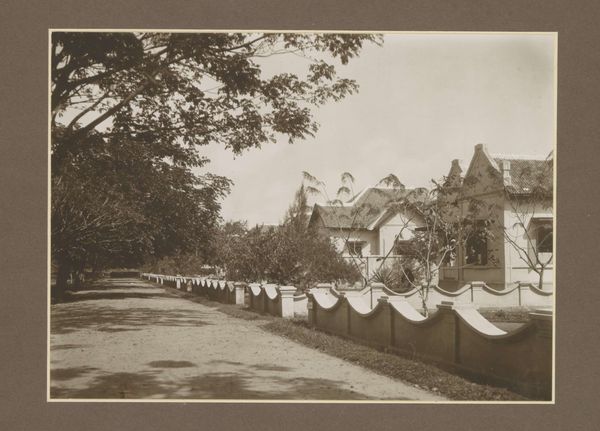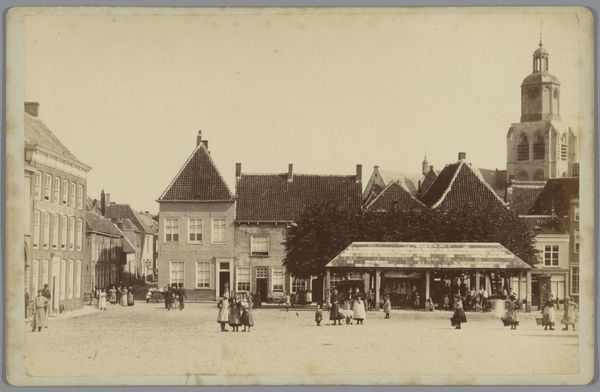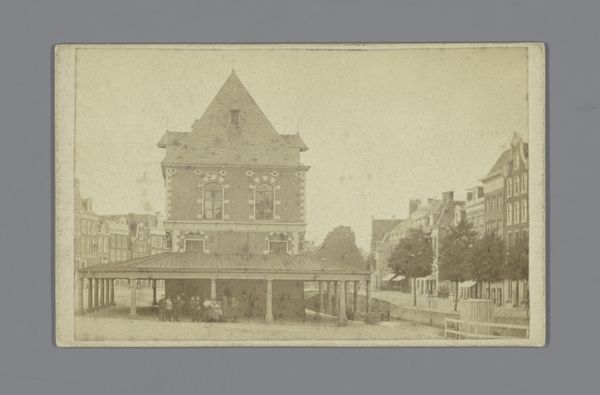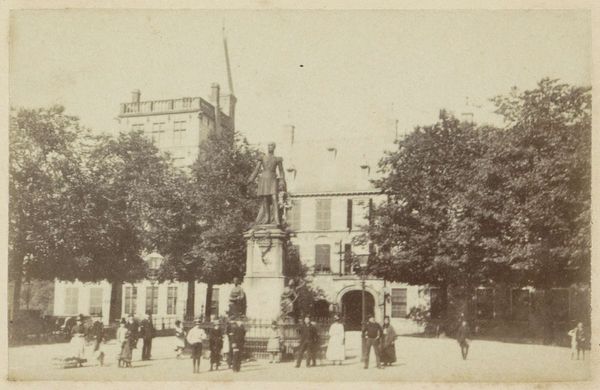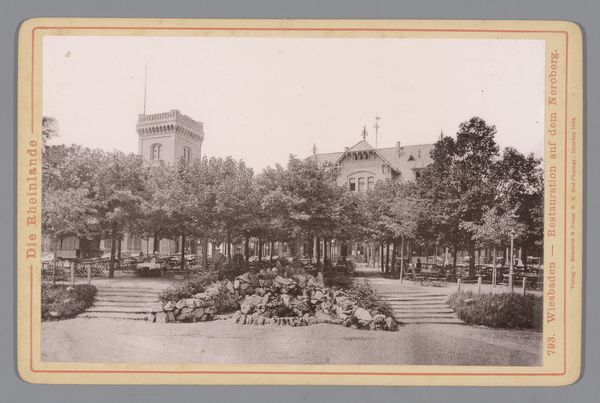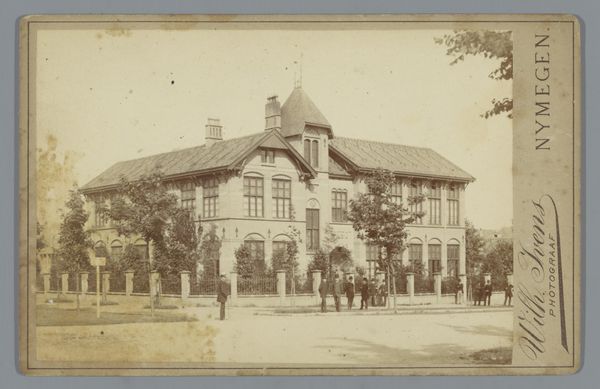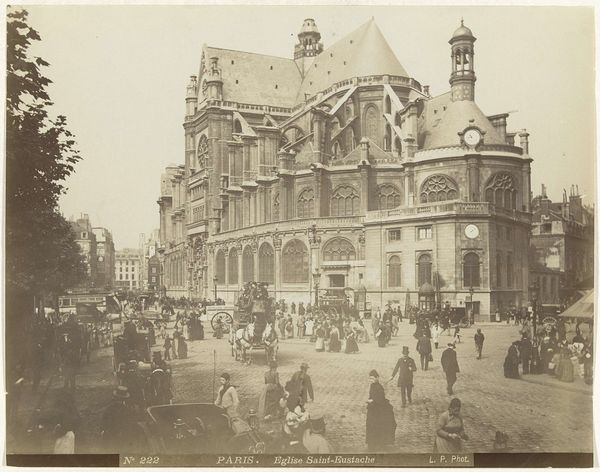
photography, gelatin-silver-print
#
dutch-golden-age
#
photography
#
gelatin-silver-print
#
cityscape
#
genre-painting
Dimensions: height 95 mm, width 135 mm
Copyright: Rijks Museum: Open Domain
Curator: Up next is “Gezicht op de Nieuwmarkt met het Waaggebouw,” a gelatin silver print by Andries Jager, predating 1907. This is quite evocative, isn't it? What are your first thoughts? Editor: There’s an overwhelming feeling of density; so many layers! From the close foreground all the way to that magnificent, castle-like building at the back. I’m also immediately struck by the tonal range – so warm and sepia-like. Curator: Exactly. Consider what the Nieuwmarkt, historically a Jewish quarter, represented during this period. We see a bustling market, the lifeblood of a community that had endured immense upheaval but had always also been a gathering space for various people, classes, ethnicities, religions. Editor: The Waag building itself dominates, structurally dividing the space. Notice how its architectural forms repeat subtly in the peaked market stalls arrayed before it. The composition is undeniably built on strong verticals, softened only slightly by the broad tree at left. Curator: It’s more than just compositional harmony though. That the Waaggebouw was once a city gate and later served purposes such as a guildhall and anatomical theatre brings layers to our reading. It symbolizes shifting power structures, knowledge, and the human body, within the context of a market—a space of everyday transactions, exchange, and labor. Editor: I can see that. There is a visual discourse emerging between these static architectures and the transient scene unfolding in front of them. Curator: I’m interested in how Jager has positioned us to engage with that dynamic. The market, filled with vendors and customers, it represents economic and social vibrancy but also reflects on class distinctions and the labor involved in maintaining city life. This connects directly with what that monumental structure has seen. Editor: I do see it now; the relationship Jager has created. Examining the interplay of light and shadow really helps emphasize this relationship. A beautiful print. Curator: Absolutely. It really encapsulates a crucial intersection of social dynamics, urban development, and labor in Amsterdam at the time, doesn't it? Editor: Yes. A fascinating lens through which to examine fin-de-siècle Amsterdam.
Comments
No comments
Be the first to comment and join the conversation on the ultimate creative platform.
